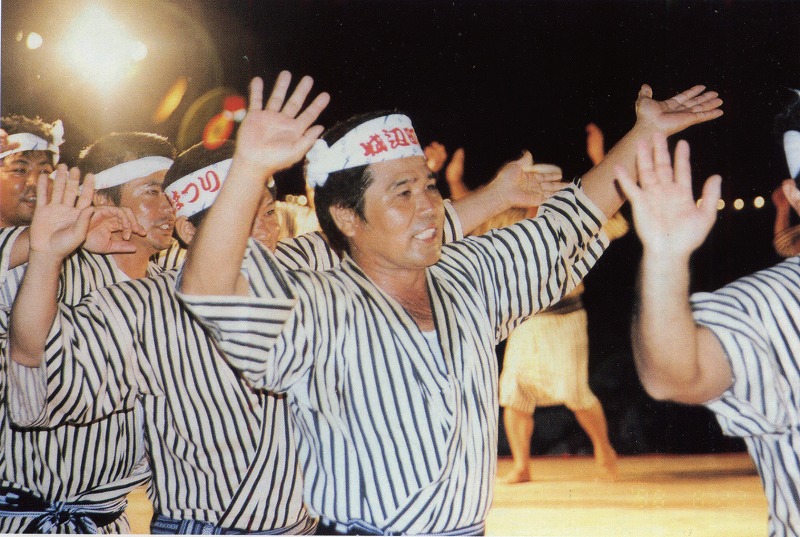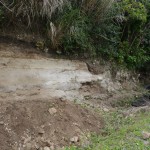【Designated by the City:Intangible Folk】Kuicha of Tomori
Long ago, women who engaged in weaving at a village guardhouse on orders are said to have likened white-crested waves on a reef to patterns of Jofu, or hemp cloth, and arranged Kuicha Agu folk songs, wishing the sand on at the beach would turn into millet grains. Being freed from the daytime work, young men and women gathered on a street at night and sang and danced humorously about various affairs including those between men and women.
Kuicha of Tomori begins with the Makyabudosu (spiral) dancing. All the dancers form a circle, step in place with their bodies facing the center, and sing Kuicha Agu, while clapping their hands. When a song is finished, they all turn right and sing four or five verses again while beating a rhythm. Then, they move on to Kuicha. Similar to Makyabudosu, they sing with their bodies facing the center of the circle. They turn left next, and dance while beating a rhythm and vigorously stamping the ground. There is no distinction of men and women in the dancing of Kuicha of Tomori. Energetic dancing and stamping by men and women together is its distinctive character.
 宮古島アプリの綾道(あやんつ)トップページ
宮古島アプリの綾道(あやんつ)トップページ 宮古島アプリの綾道(あやんつ)の内容
宮古島アプリの綾道(あやんつ)の内容 宮古島の3つのルート
宮古島の3つのルート 宮古島市長のあいさつ
宮古島市長のあいさつ 宮古島文化遺産紹介
宮古島文化遺産紹介








